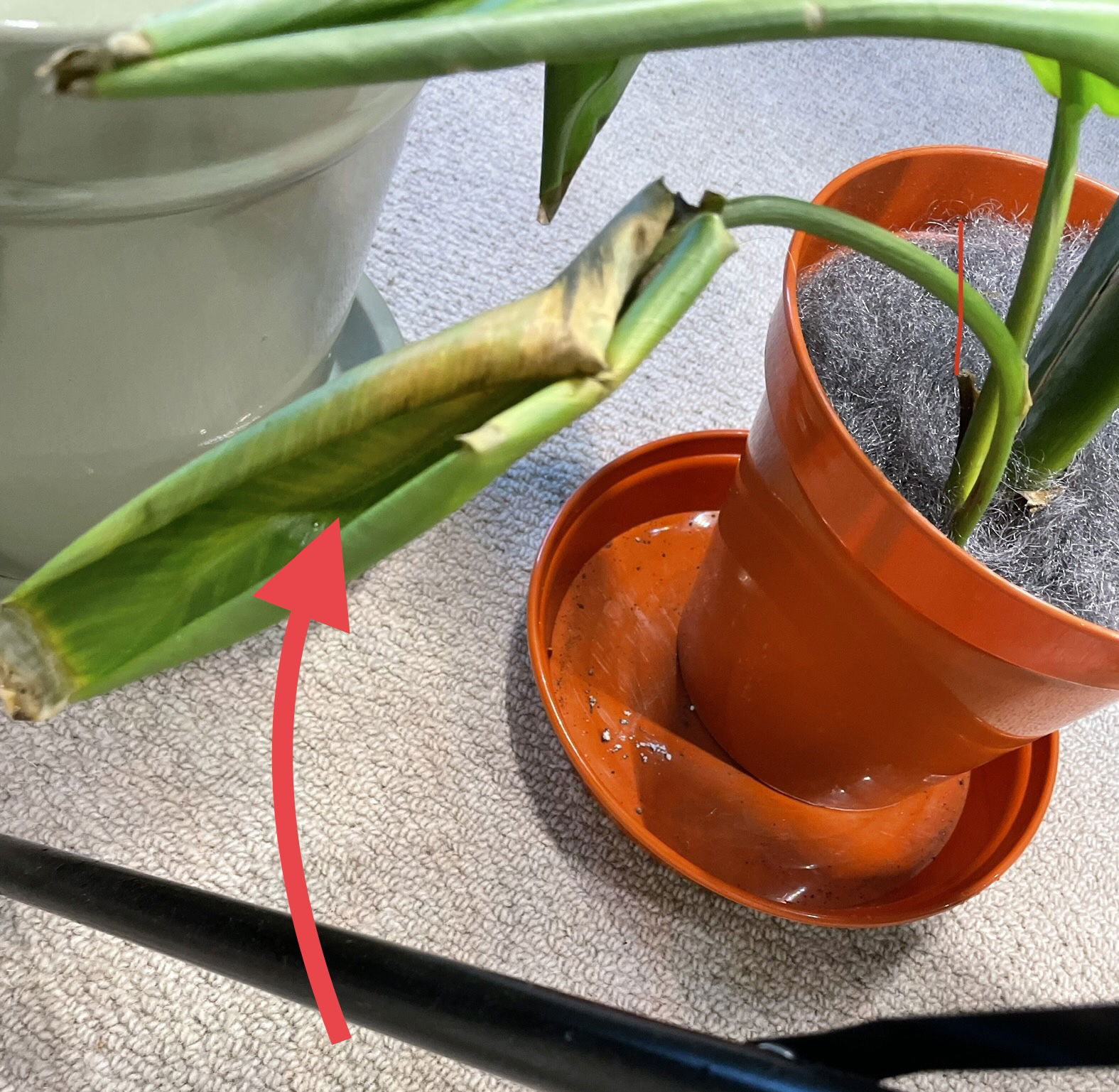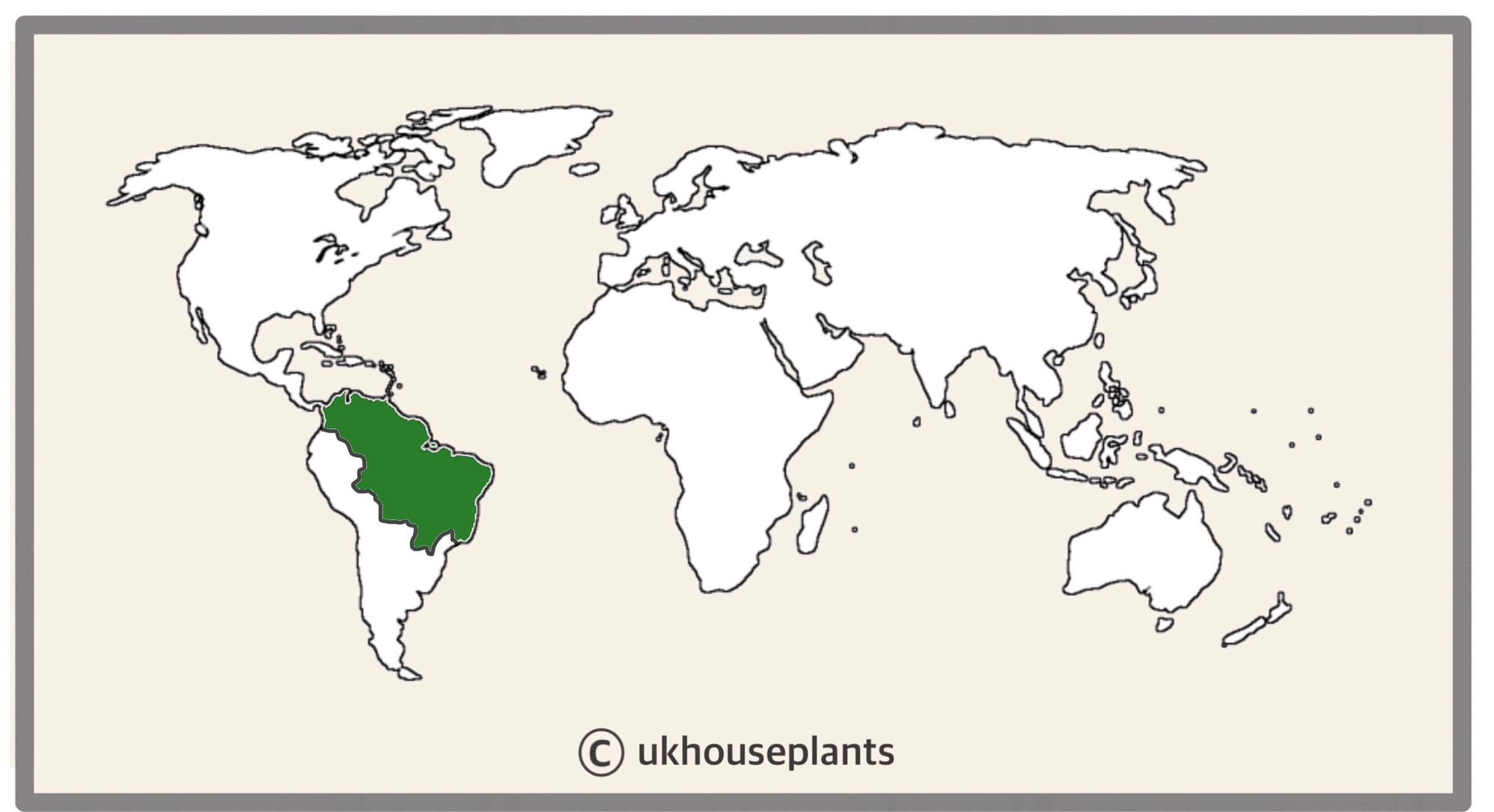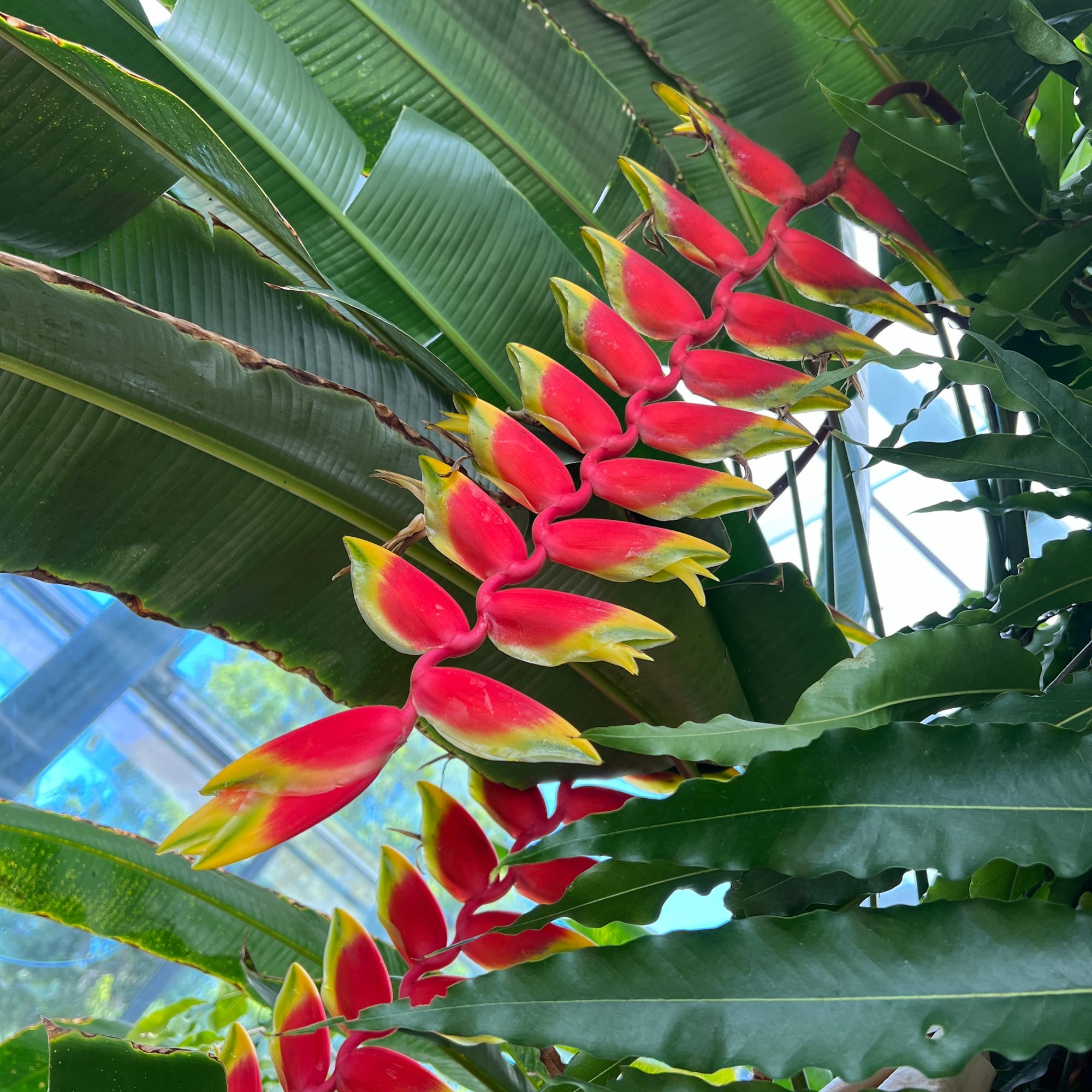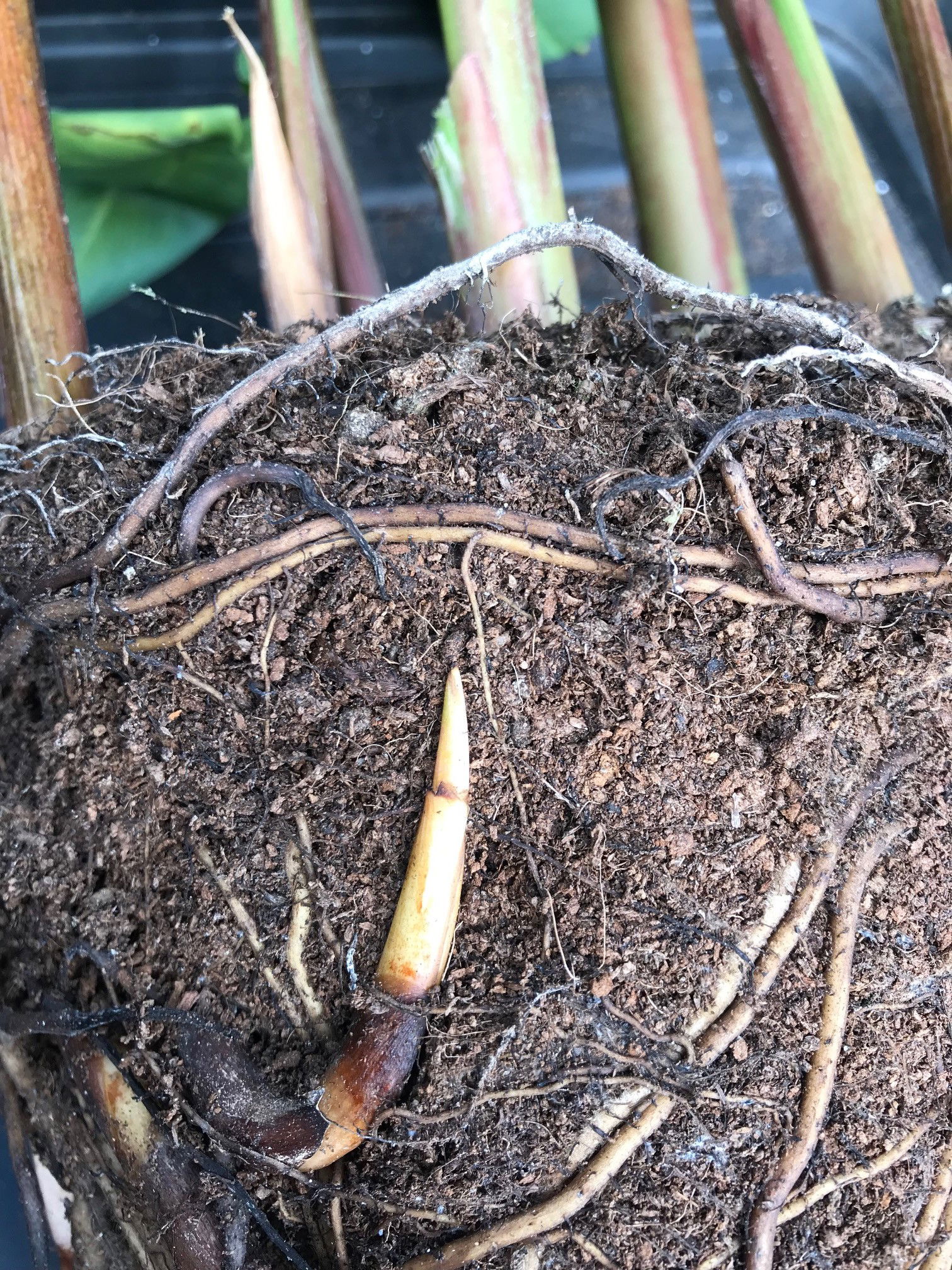
Heliconia psittacorum
Contents
- Top Tips
- Location, Water, Humidity & Fertilisation
- Dormancy Care & Annual Flowers
- Common Issues
- Origins, Temperature, Propagation, Repotting & Toxicity.
Need the answer to a specific plant query? Book a 1-to-1 video call with Joe Bagley, the website's friendly author, to overcome and address your niggling problem! Available on iMessage, WhatsApp, Facebook Messenger & more.
Top Tips & Info
- Care Difficulty - Easy to Moderate
- Provide a bright location with little to no direct sunlight. We'd recommend placing yours within two metres of a window, or in a semi-shaded conservatory.
- Allow the top third of the soil to dry out in between waters, reducing this further in the winter to avoid root rot. Remember, it's always better to under-water a Heliconia, rather than over-do it due to the thick rhizomatous roots that can retain moisture.
- Fertilise every third to fourth water using a 'Houseplant' labelled feed, depending on the season.
- Repot every two years using a well-draining potting mix, for instance, a 'Houseplant' Compost. This is a good time to propagate basal offshoots (rhizomes) that develop around the base of the plant, too.
- Some specimens will die back over the year with symptoms including yellowed/browned foliage. This is entirely normal and should bounce back in the spring with a flurry of new leaves and flowers. Scroll down to the FIRST paragraph of 'Common Issues ' to learn more!
Location & Light - 🔸🔸
Bright, indirect light is best for Heliconia, as too little light will result in slowed growth and an absence of flowers. Those grown in darker locations will need to be watered far less than those in brighter spots. Always dust the leaves if the specimen situated in a shady area to increase its light-capturing efficiency.
Water - 🔸🔸
During spring and summer, allow the top third of the soil to dry out in between irrigations while reducing this further to replicate its dormancy period in the autumn and winter. Although Heliconia are equipped to endure short-lived droughts, try not to test their strength as it'll inhibit the chance of a bloom during the spring. For those that live in darker locations, hydrate the soil far less often than with those grown in brighter places to counteract the chances of root rot. Under-watering symptoms include yellowing leaves, flower loss, browning leaf-edges and slowed growth; these issues are usually due to either a much-needed repot (see the 'Repotting' section towards the bottom of the article for more info), too much sunlight or forgetfulness. Over-watering symptoms include root or rhizome rot, a rotten or soft stem and rapidly declining health. Remove the root ball from the pot and inspect the roots for possible rot. Heliconias grow via rhizomes in the soil, so soggy soil or waterlogging soil will soon cause
Humidity - 🔸🔸🔸
Moderate humidity accompanied by good air circulation is a must; finely mist the foliage once every ten days for those situated near a radiator. Placing the plant's base on a pebble tray will not only provide a stable level of humidity, but it'll also reward you with more reliable growth during the colder months when the heaters are operating.
Fertilisation - 🔸🔸
Feed with a 'Houseplant' labelled fertiliser every third water while the plant is in growth/bloom. You can always use a potassium-rich feed to prolong the flowering period if you'd like, although the typical 'Houseplant' products will still do the job. Once the flowers begin to elapse and/or the foliage dies off, revert to the original 'Houseplant' labelled feed once every fourth water (even if the plant is in a dormancy period with no foliage).
Common Issues with Heliconia
The first paragraph includes ways to achieve flowers in the summer months, which is usually achieved when your plant serves a well-spent dormancy period in the previous autumn & winter.
Heliconia are herbaceous perennials, meaning that most specimens will die back to their roots over the autumn/winter, before bouncing back with fresh foliage and eventual flowers for the summer. This phenomenon is what's known as the 'dormancy period'. You'll know when the plant is ready to die back as its foliage will yellow/brown over with no new fresh growth and the flowers may wilt or fall off. When this occurs, prune off the old growth/stems to around three inches above the soil, leaving any fresh stems that are still pushing new leaves out. Place the plant in a bright location (conservatory, windowsill, greenhouse or even outside in warmer climates) and maintain temperatures over 15℃ (59℉) throughout this dormancy. Water every two weeks and feed every third water with a 'Houseplant' labelled feed. N. B. - This step can be taken any time of year if your specimen is showing signs of this.
Curled leaves and crispy brown patches are the result of too little water and over-exposure to the sun. Although Heliconia are a superb choice for plants in sunny locations, those that haven't acclimatised to the harsh rays will show signs of sun-scorch and environmental shock. Gradually increase the amount of light every few days, starting from an indirect location to a few hours of morning/evening sun over the course of a few weeks.
Prolonged exposure will significantly speed the process of dehydration, so consider transplantation into a bigger pot (in any season) to wrap the roots around moister soil.
 Here's the difference between a healthy root and a dying one.
Here's the difference between a healthy root and a dying one.
Root rot (pictured above) is a common issue with specimens sat in too moist or waterlogged soil for long periods of time. Symptoms include rapidly yellowing leaves, stunted growth and stem collapse. Take the plant out of the pot and inspect health below the soil line. If the roots sport a yellow tinge, you're good to go, but if they're brown and mushy, action must be taken immediately. More information about addressing root rot can be found on this link.
Pests could arise at any time, with infestations starting from the original nursery or via contamination in your home. With Heliconia, Spider Mites and Mealybugs tend to be the usual inhabitants, with the first being minute and almost transparent, roaming the leaves in search of chlorophyll and a site to hide its eggs. The latter, however, will stand out much more, with white cottony webs developing across the foliage and stems. Thoroughly check the plant's cubbyholes before giving it the all-clear, or click on the appropriate links to learn more about eradicating these issues.
 Severe leaf-curling on ALL leaves is usually down to one of two issues; plant dehydration or transplant shock. We recommend watering the plant and waiting around three days to see if the problem subsides. If it doesn't, have a look at its root system for signs of root rot, as it'll almost identical to severe dehydration (the plant can't absorb moisture and therefore begins to wilt like its dehydrated). If the roots look rotten like the image above, click on that link. For Heliconia that are now wilting shortly after being repotted, the best course of action is to leave it; don't repot the roots as it may cause further disturbance, increasing the risk of plant death.
Severe leaf-curling on ALL leaves is usually down to one of two issues; plant dehydration or transplant shock. We recommend watering the plant and waiting around three days to see if the problem subsides. If it doesn't, have a look at its root system for signs of root rot, as it'll almost identical to severe dehydration (the plant can't absorb moisture and therefore begins to wilt like its dehydrated). If the roots look rotten like the image above, click on that link. For Heliconia that are now wilting shortly after being repotted, the best course of action is to leave it; don't repot the roots as it may cause further disturbance, increasing the risk of plant death.
Due to the genus' sensitivity to chemicals, Leaf Shine shouldn't be used to improve the appearance of the foliage, and instead should be cleaned using warm soapy water. Failure to do so may cause yellowed, mottled spots that cannot be undone.
A lack of blooms could be due to an array of different issues, including irregular watering habits, too little light, a lack of fertilisation or a poorly spent dormancy period. Heliconia will only flower once a good resting period is achieved, so scroll up to the first paragraph of this 'Common Issues' section'.
Dust the leaves regularly. Although this isn't too much of an issue, a build-up of dust particles can clog up the plant's pores, causing lowered light capturing-efficiency. Wipe the topsides of the leaves down once a month to keep levels down and improve growing conditions.
Origins
Heliconia is part of the Zingiberales order that holds genera such as Musa (Banana palms), Strelitzia and Calathea that bare significant similarities in their rhizomatous and foliage structures. Heliconia was first classified in 1753 by Carl Linnaeus, using the Greek word 'helikṓnios' to mean 'high', in reference to the tall-growing nature of the genus (over 2m, 6ft). This genus originates from tropical America but has been recently naturalised in Florida, Thailand and the Gambia.
 The Distribution of Heliconia psittacorum.
The Distribution of Heliconia psittacorum.
Temperature
15° - 24°C (59° - 75°F).
H1b (Hardiness Zone 12) - Can be grown outdoors during the summer in a sheltered location with temperatures above 15℃ (59℉), but is fine to remain indoors, too. If you decide to bring this plant outdoors, don't allow it to endure any direct sunlight as it may result in sun-scorch and dehydration. Regularly keep an eye out for pests, especially when re-introducing it back indoors.
Spread
Up to 2m in height and 0.8m in width if repotted every two years. The ultimate height will take between 5 - 10 years to achieve, but can live for up to twenty years in the right care with a sufficient dormancy period from time to time.
Pruning & Maintenance
Remove yellowed or dying leaves and plant debris to encourage better growth and improve the all-round appearance. Pruning must be done with clean scissors or shears to reduce the chance of bacterial and fungal diseases; remember to make clean incisions as too much damage can shock the plant.
Pruning the entire foliage back to three inches above the soil line is great practice for simulating new growth. Not only will this provide a 'fresh start' for the plant, it'll also increase the likelihood of flowers in the oncoming growing season. Scroll up to the first paragraph of 'Common Issues' to find out more.
Propagation
Via Seed & Basal Offset Division.
Seeds (Easy) - Soak the seeds in lukewarm water for around 24hrs in a dark location, preferably on top of an operating radiator. The best soil to use is a ‘Houseplant’ labelled potting mix; however, multipurpose compost with added perlite, grit and sand is also fine. Set the seeds around 3/4 of an inch deep (2cm) in the soil using a seed tray or shallow plant pot. Maintain evenly moist soil and allow the excess water to freely drain from the pot's base to prevent water-logged conditions. The ideal location for successful germination is in a bright, indirect setting with temperatures above 18℃ (64℉) with bottom-heat. Keep the pot in a transparent bag with several small holes to provide a stable level of humidity, along with longer-lasting soil moisture. Germination may take up to three months, so don't discard any unsuccessful seeds until this threshold has been surpassed. Remove the bag once the seedlings produce their second leaf and then split them into their own 7cm pots when necessary!
Offset Division (Pups) (Easy) - Separating the basal offsets into their own pot will not only expand your plant collection, but it'll also slow the process of becoming pot bound. The best time to divide is during the spring or summer, with the pup's height surpassing 10cm. Gently brush away some of the soil to gain better access to the pup's base, where its roots will be housed. While using a clean pair of secateurs or scissors, cut the cord with at least two root strands attached to its base. Set the pup in an appropriate-sized pot with adequate drainage and a houseplant-labelled compost. The ideal location would provide bright, indirect light and temperatures above 15℃ (59℉). Maintain evenly moist soil, allowing the top third to dry out in between hydrations. After a month or two, you'll be able to treat it like a matured specimen by using the care tips above.
N. B. - You can also perform offset division even when there's no foliage on the rhizomatous root. Simply follow the tips above to propagate what's known as a 'Bare Root Cutting'.
Flowers
Despite their readiness to flower in the wild, it may take up to two years for Heliconia to reproduce flowers indoors after the first year that you purchase them. Its flowers largely resemble the Bird of Paradise Plant (Strelitzia) with a beak-like spathe at the base and a cluster of small flowers emerging from the centre. Most species within this genus will sport either red, orange, yellow or pink flowers and will zig-zag along the top of the flower shaft, lasting up to two months.
Blooms will only appear on fresh, un-flowered stems that have recently grown from the soil in that season. A dormancy period over the autumn & winter is highly necessary for the following season's flowers, so scroll up to the first paragraph of 'Common Issues' to learn more on this!
 Some Heliconia (False Bird of Paradise) will produce upright clusters of flowers, whereas others (above) will hang pendulously within the foliage line. The blooms are typically oozing with moisture which is a little on the greasy side!
Some Heliconia (False Bird of Paradise) will produce upright clusters of flowers, whereas others (above) will hang pendulously within the foliage line. The blooms are typically oozing with moisture which is a little on the greasy side!
Repotting
All species of Heliconia will develop large rhizomatous root systems that'll invade the pot within two year. With this in mind, transplant every two years using a 'Houseplant' labelled compost and the next sized pot; this is an excellent time to check the roots' condition, as well as dividing basal offsets. Deformed plastic pots caused by the underground growths are totally normal and may not always require a bigger pot. Click here for a detailed step-by-step guide on transplantation, or via the following link to learn about repotting with root rot!
Book a 1-to-1 video call with Joe Bagley if you'd like a personal guide to repotting your houseplant. This will include recommending the right branded-compost and pot size, followed by a live video call whilst you transplant the specimen for step-by-step guidance and answer any further questions!
 IMAGE 1: Here is a rhizomatous growth that'll develop into its own stem (pictured above) within the following few months.
IMAGE 1: Here is a rhizomatous growth that'll develop into its own stem (pictured above) within the following few months.
Pests & Diseases
Keep an eye out for mealybugs, spider mites, scale, thrips & vine weevils. Common diseases are root rot, leaf-spot diseases, powdery mildew & botrytis - click here to learn more about these issues.
Toxicity
This genus is classified as poisonous. If parts of the plants are eaten, vomiting, nausea and a loss of appetite may occur. Consumption of large quantities must be dealt with quickly - acquire medical assistance for further information.
Retail Locations
Online Stores are mostly likely to sell Heliconia; however, Morrison's may sell them from time to time in the spring and summer months.
Book a 1-to-1 Call with Joe Bagley
If you need further advice with your houseplants, book an advice call with ukhouseplants' friendly and expert writer today! This can be done via a video or audio call on most apps, including Facebook, FaceTime & Skype. A ten-minute call costs £5.99 (US$7), or £15.99 for thirty minutes. You can ask multiple questions, including queries on plants, pests, terrariums, repotting advice and anything in between. Please consider supporting this service to keep ukhouseplants thriving!